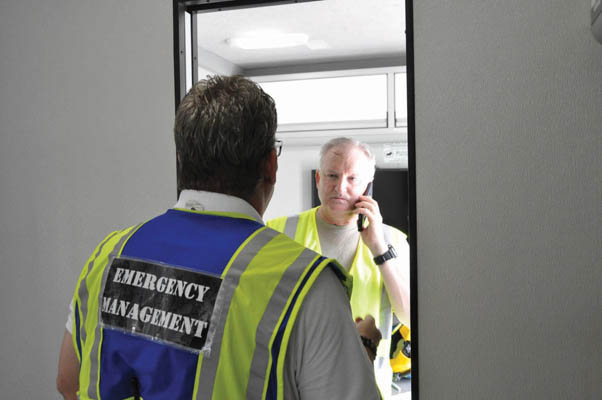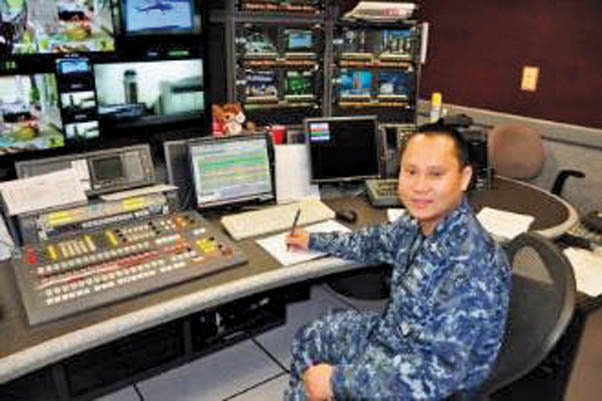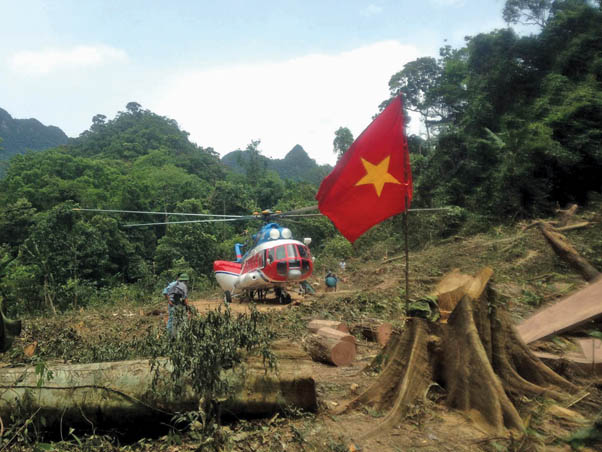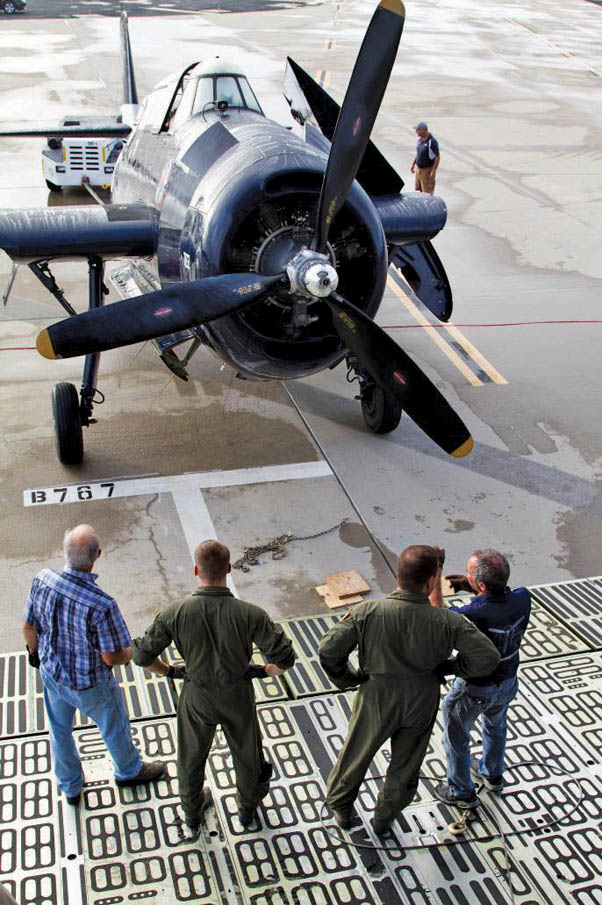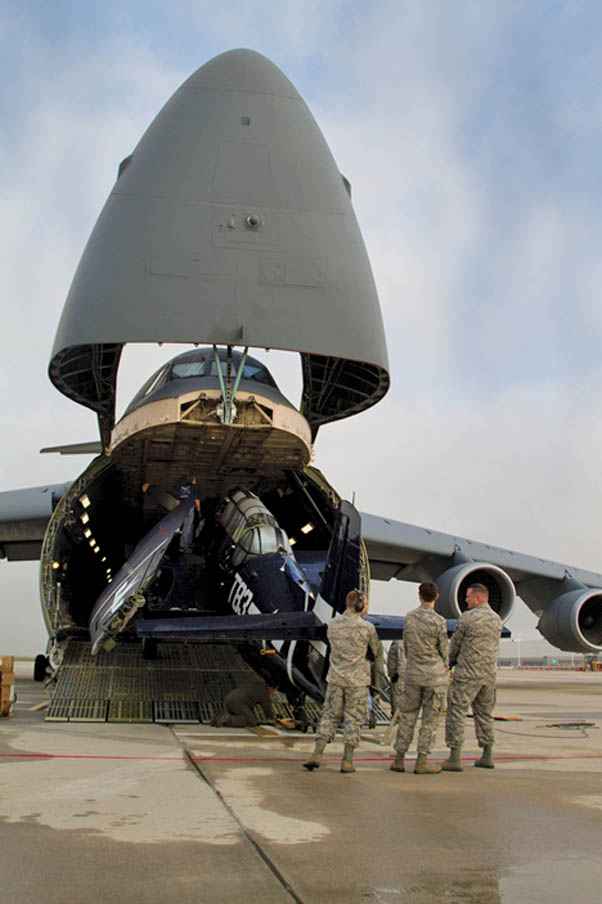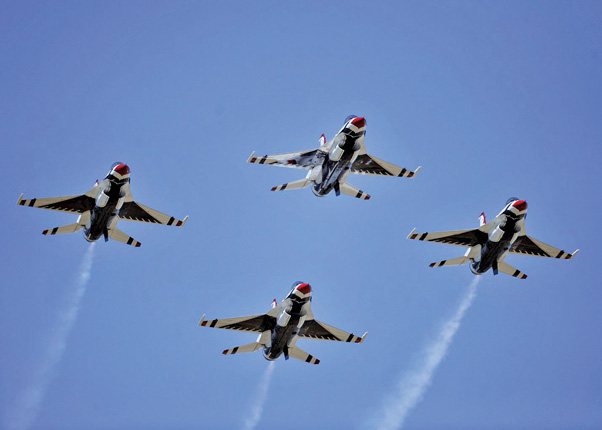PLACE FLAGS TO HONOR VETS
If you are interested in helping place flags on the graves of Veterans prior to Veteran’s Day, please join us. We plan to meet at Riverside Evergreen Historical Cemetery (4414 14th St., Riverside, 92501) on Saturday morning, Nov. 7, 8 a.m. to place American flags on the graves of more than 1,000 Veterans (to include the gravesite of Col. Cornelius Cole Smith, United States Army, the cemetery’s only Congressional Medal of Honor recipient) in honor of Veteran’s Day, which is Nov. 11. All American flags are provided. Any and all volunteers are welcomed to participate. The flags will remain in place through Veteran’s Day. Make it a family day and hike to the top of Mount Rubidoux after you are done placing flags. If you have any questions, please contact Mr. John Morris at 951-655-3622 or 951-746-0416.
MANDATORY FLU VACCINATIONS
The 452 AMW Flu Vaccination Campaign has begun, and will continue through the December’s UTAs. The Flu vaccination is mandatory for all Airmen unless exempted by medical staff. Airmen not current with their Flu vaccination after the December UTAs will potentially be placed in a no-point, no-pay status.
Please remind your fellow Airmen to attend our mass immunization site at Bldg. 355 (2355 Graeber St.) during the October and November UTAs.
Schedule for October/November UTAs is: Saturdays 8 a.m. – 4 p.m. and Sundays 8 a.m. – 3 p.m.
Additionally, there will be a mobile vaccination site at the Wing Commander’s Call during the November UTAs. Starting in December, all Flu vaccinations will be given at the base clinic.
All Airmen, Unit Health Monitors and leaders are asked to get their annual Flu vaccination at the earliest convenience, and to encourage others to do the same. Help make this year’s Flu Campaign a success. There is no vaccine available for civilians at this time. For questions or concerns, email Maj. David Haupt at david.haupt.7@us.af.mil.
KEY SPOUSE INITIAL TRAINING TOMORROW
The 452nd Air Mobility Wing’s Airman and Family Readiness director will conduct Initial Key Spouse Training on Saturday, Oct. 24, in the Mission Support Group Conference room, 1261 Graeber Street, Bldg. 2313, from 8:00 a.m. until noon. Prior to attending, interested volunteers must be interviewed and appointed by their unit commanders. Key Spouses are responsible for assisting families in finding and using available base and community resources. They also provide support to military families during their sponsor’s deployment. Reservations are required. Please call the A&FRC at 951-655-5350 for more information and to reserve your seat.
BACK STREET TRANSFORMATION
The Hap Arnold Club is looking for “Team March” specific items/memorabilia to decorate the walls of the new Backstreet Café! Bring items to Bldg. 434, administration office. Any unused items will be returned. Call 951-655-2801 for more information.
NAF TEAM JOBS AVAILABLE
Non-appropriated jobs are available at various locations throughout the USAF. View available positions at www.NAFJobs.org.
INSTALLATION VOTING ASSISTANCE OFFICER
With the onslaught of political debates in the news, it’s time to consider your right to vote. Are you registered? Do you understand military and federal employee guidelines for participating in a political rally or event? Are your social media postings getting political? The March Air Reserve Base Installation Voting Assistance Officer, Maj. Jessica Ditson, can help you find the information you need. She can be reached at Jessica.ditson@us.af.mi l or by calling 951-655-4551. Don’t wait until your state’s deadline to register. Choose to make your vote count!
MARCH EQUAL OPPORTUNITY SEEKS COUNSELORS
The March EO office is looking for ARTs/civilians interested in training to serve as Collateral Equal Opportunity counselors. This is an additional duty appointment. The Collateral EO counselors serve as a bridge between civilian employees and management for informal complaints concerning discrimination. Applicants should be at ease with oral and written communication to all pay grades, and have the ability to remain neutral while performing his or her duties. The additional duty will not exceed 20 percent of the counselor’s primary job duties. Applicants range from GS-05 to GS-12 or equivalent. Primary supervisor concurrence required. Training is required, date/time to be determined. If interested, contact Ms Paula Greenhaw, paula.greenhaw@us.af.mil, Maj. Nixomar Santiago, nixomar.santiago@us.af.mil.
HAP ARNOLD CLUB
The Back Street Café is temporarily operating in the Grande Ballroom at the Hap Arnold Club and serving breakfast and lunch. Most of your Back Street favorites are available, such as breakfast burritos, French toast, fried chicken, March Burger, salmon sandwich and more! Download the full menu with pricing at MarchFSS.com. Hours of operation are Monday through Friday: 6:30-10 a.m. for breakfast and 11 a.m. – 1:30 p.m. for lunch.
UTA operating hours are 5:30-9 a.m. for breakfast (Sat & Sun); 11-1 p.m. for lunch (Sat & Sun), and 4-8 p.m. for dinner (Fri & Sat).
MARCH TICKETS & TOURS
Amusement Park Specials
Knott’s Scary Farm tickets are here!! Prices range from $38 to $48 depending on the date. Visit MarchFSS.com for more information.
Castle Park: $16 per person includes unlimited rides, water park access, miniature golf and the new Sky Rider.
Disney 3-Day Park Hopper military special: $130 per person (adult/child)
SeaWorld “Waves of Honor” special: Extended through November 11, 2015. Program provides a one-time, limited, free admission to SeaWorld San Diego per veteran service member and up to three guests. Visit WavesofHonor.com to register for and obtain your free admissions. Additional tickets are available for purchase from the Tickets & Tours office.
Discount Movie Tickets
Available for only $10 each and valid for Regal Cinemas, United Artists Theatres and Edwards Cinemas.
Hotel Discounts
Receive 10% off any Best Western and 15% off any Choice Hotel
Visit the Tickets & Tours page at MarchFSS.com and download the Discount Ticket Price List for a full list of discounts tickets prices, hotel discounts and special promotions. Call Tickets & Tours at 951-655-4123 for more information.
LEARN TO FLY WITH THE AERO CLUB
The March Aero Club offers flight training (flying, private license, ground school, instrument training) at very reasonable rates including a pay-as-you-go plan with zero down. Visit Hangar 355 on base or call 951-655-3875 for more information.
OUTDOOR REC EQUIPMENT RENTALS
Outdoor Recreation has a variety of equipment for rent such as camping gear, water sports equipment, bicycles, and trailers to carry it all! Special orders for Callaway, Odyssey, Cleveland, Never Compromise, Nike, Bag Boy, Sun Mountain and Staff golf equipment are also available. Download the full equipment rental price list at MarchFSS.com, call 951-655-2816 or come on by for more information.
BACK STREET CAFÉ TEMPORARILY OPERATING IN BALLROOM
Breakfast and lunch are available in the club’s Grande Ballroom. Most of your Back Street favorites are available such as Breakfast Burritos, French toast, fried chicken, March Burger, salmon sandwich and more! Download the full menu with pricing at MarchFSS.com. Hours of operation are Monday through Friday, 6:30-10 a.m. for breakfast; 11 a.m. – 1:30 p.m. for lunch. UTA operating hours are 5:30-9 a.m. for breakfast (Sat & Sun); 11-1 p.m. for lunch (Sat & Sun), and 4-8 p.m. for dinner (Fri & Sat).
FITNESS CENTER NEWS
The March Fitness Center has received the Wellbeats Virtual Group Fitness Kiosk. This kiosk allows members to participate in virtual fitness classes.
Daily Fitness Schedule is:
Mondays: 6 a.m. — Virtual Fusion Yoga; 10:30 a.m. and 12:15 p.m. — Intro TRX; 11 a.m. —Virtual Spin
Tuesdays: 11 a.m. — Virtual Strength “Fit for Duty;” 12:30 p.m. and 5 p.m. — Circuit Training
Wednesdays: 6 a.m. — Virtual Fusion Yoga; 11 a.m. — Zumba; 12:15 p.m. — Virtual Fusion Yoga; 12:30 p.m. and 5 p.m. — Battle Ropes Circuit Training
Thursdays: 11 a.m. —Virtual Spin; 12:15 p.m. — Virtual Strength “Fit for Duty;” 12:30 p.m. and 5 p.m. — Circuit Training
Fridays: 10 a.m. — Zumba; 10:30 a.m. and 5 p.m. — Intermediate TRX; 11:15 a.m. — Virtual Cardio
UTA Saturdays: (A UTA) 5 p.m. — Virtual Strength “Fit for Duty;” (B UTA) 5-7 p.m. — Pick-up Basketball
Call the Fitness & Sports center at 951-655-2292 to sign up or for more information on these programs.
GRILL NIGHT AT SALLY’S ALLEY
Every Wednesday night starting at 4 p.m., Sally’s Alley is open for business with Grill Night. Sally’s Alley is also now open every Pre-UTA Thursday at 4 p.m. For more information, call them at 951-653-2121.
THE 452ND AIR MOBILITY WING’S 2015 MILITARY BALL
The 452nd Air Mobility Wing’s 2015 Military Ball is scheduled for Saturday, November 21. Doors will open at 5:30 p.m. with cocktails at 6 p.m. and seating at 6:30 p.m. This year’s location remains the Riverside Convention Center, and this year we will have a Holiday Theme. This will be a fantastic evening and one you do not want to miss. Ticket prices dropped to $60 per person. See your first sergeant to purchase tickets or contact SMSgt. Griffey at 951-655-3999. There are 40 rooms available at the Marriott for $123 each, and 50 rooms available at the Hyatt Place for $105 each (the Hyatt Place price includes breakfast). When you call to make a reservation, mention the 2015 Military Ball to get the correct rate. You can contact The Marriott at 1-800-228-9290 or (951)784-8000 for reservations and The Hyatt Place at 1-888-553-1300 or (951)321-3500. ROOM RATE INCREASE-The Marriott Hotel advises that the room rates for the 2015 military ball were increased from $110 to $123 due to the FY 16 military per diem rate change that was recently released.
